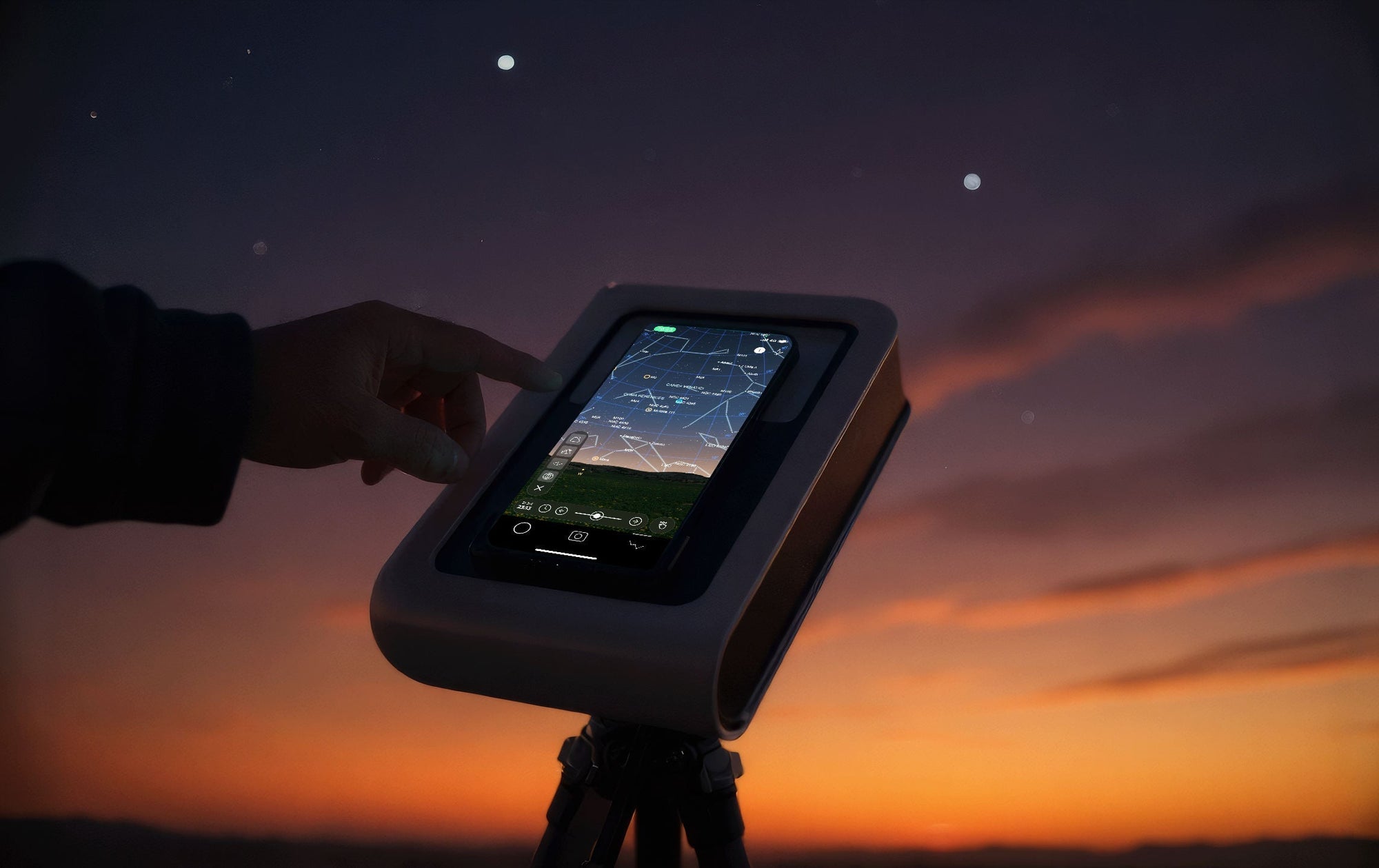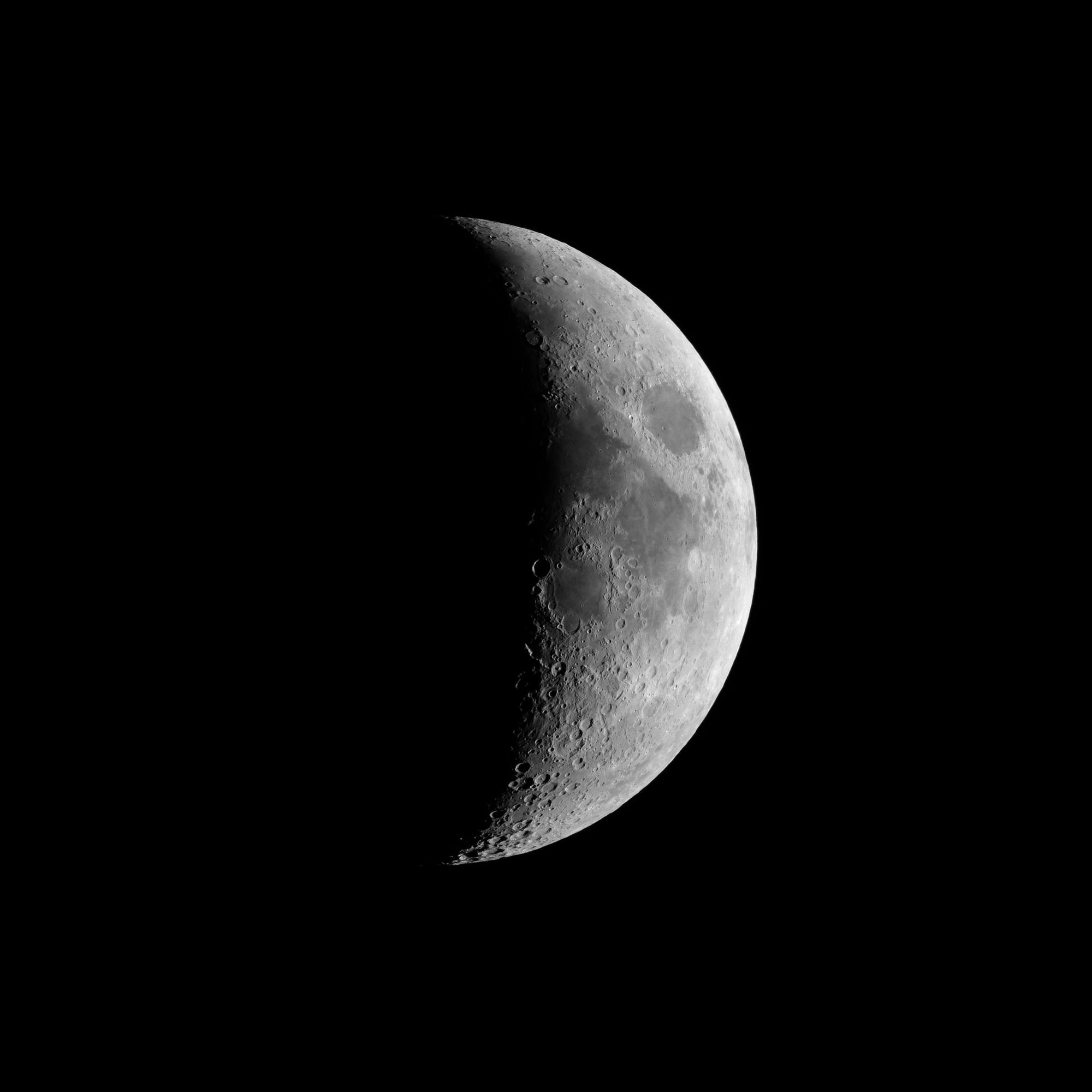
What to observe in the sky in June 2025 with a smart telescope
21 May. 2025
June 2025 astronomical calendar
It is recommended to observe nebulae and galaxies when the Moon is not visible. Its brightness diminishes the darkness of the sky and reduces the quality of observations of faint and diffuse objects.
Refer to the following calendar for the best days this month.

June 21 – Solstice
The longest day of the year in the Northern Hemisphere, and the longest night in the Southern Hemisphere.
June 22–28 – Prime deep-sky observation window
This is the best period for observing deep-sky objects.
June 23 – The Moon passes close to / through the Pleiades
Visible from Europe and Africa. To catch just before dawn low on the west horizon.
June 29 – Close approach between the Moon and Mars
To catch after sunset.
Celestial Scene of the Month
Northern hemisphere
In the constellation Cygnus, nestled within the rich star fields of the Milky Way, lies a pair of large emission nebulae: the North America Nebula (NGC 7000) and the Pelican Nebula (IC 5070). These vast clouds of glowing hydrogen gas are part of the same giant star-forming region.
Both nebula perfectly fit the mosaic framing of Vespera.

Southern hemisphere
The Lagoon Nebula (M8) and the Trifid Nebula (M20) are two of the most iconic deep-sky objects in the summer night sky, particularly when viewed from low latitudes or the Southern Hemisphere.
The Lagoon Nebula is home to young, hot stars that illuminate the surrounding gas, revealing intricate structures. The Trifid Nebula (M20) is especially remarkable for its combination of emission, reflection, and dark nebulae, which together create its distinctive three-lobed appearance.
Because the Trifid is a mix of different types of nebulae, using a dual-band filter is not recommended.

"Plan my Night" of the month
Suggested observation program you can automate with "Plan My Night."
Give each object as much observation time as you can to get the best results.
Northern Hemisphere
Dual band filter can be used but it is also fine without
| Time | Target |
|---|---|
| Early Night |
Ring Nebula, Messier 57. Planetary nebula |
| Mid Night |
Omega a.k.a. Swan a.k.a. Horseshoe Nebula, Messier 17 . Emission Nebula |
| Late Night |
Dumbbell Nebula, Messier 27. Planetary nebula. |
Southern Hemisphere
The dual-band filter can be used for this plan
| Time | Target |
|---|---|
| Early Night |
Cat's Paw Nebula, NGC6334. Emission Nebula |
| Mid Night |
Eagle Nebula, M16. Emission Nebula |
| Late Night |
Helix Nebula, Caldwell 63. Planetary nebula |
Around the full moon
During the few nights surrounding the full moon, it's best to focus on star clusters, which are less affected by the Moon’s light pollution.
In the Northern Hemisphere, the globular cluster M5 in the constellation Serpens is just as large and bright as the famous Hercules Cluster.
In the Southern Hemisphere, the Great Peacock Cluster — Caldwell 93 in the constellation Pavo — is the fourth-brightest globular cluster in the entire sky.
Challenging Target of the Month
Draco Galaxy triplet
Visibility: northern hemisphere
Constellation: Draco
Far less well-known than the Leo Triplet, this group of three galaxies—NGC 5981, NGC 5982, and NGC 5985—appears aligned and close together, though this is merely a visual effect caused by perspective. Unlike the Leo Triplet, these galaxies do not belong to the same physical group.
NGC 5985 is a beautiful spiral galaxy seen at a slight tilt, NGC 5982 is an elliptical galaxy, and NGC 5981 is a spiral seen edge-on. With magnitudes between 11 and 12, they are more challenging to observe than the brighter Leo Triplet yet remain a rewarding target.
Corona Australis molecular cloud complexe
Visibility: southern hemisphere
Constellation: Corona Australis
Located around the variable star R Coronae Australis (R CrA), this region features a striking mix of emission, reflection, and dark nebulae. The scene is enhanced by a small, bright globular cluster—NGC 6723, also known as the Chandelier Cluster—which, unlike the nebulae, belongs to the constellation Sagittarius.
While the emission nebulae are compact and centered around the star, the dark nebulae—formed by a large molecular cloud—extend much farther. Capturing their full scale requires using mosaic mode.
As with all dark nebulae, long integration times are needed to bring out the finer details. However, since this region lies close to Sagittarius at the heart of the Milky Way, it is rich in background stars. This makes it easier to distinguish the dark nebulae, as they appear silhouetted against the dense star field.








